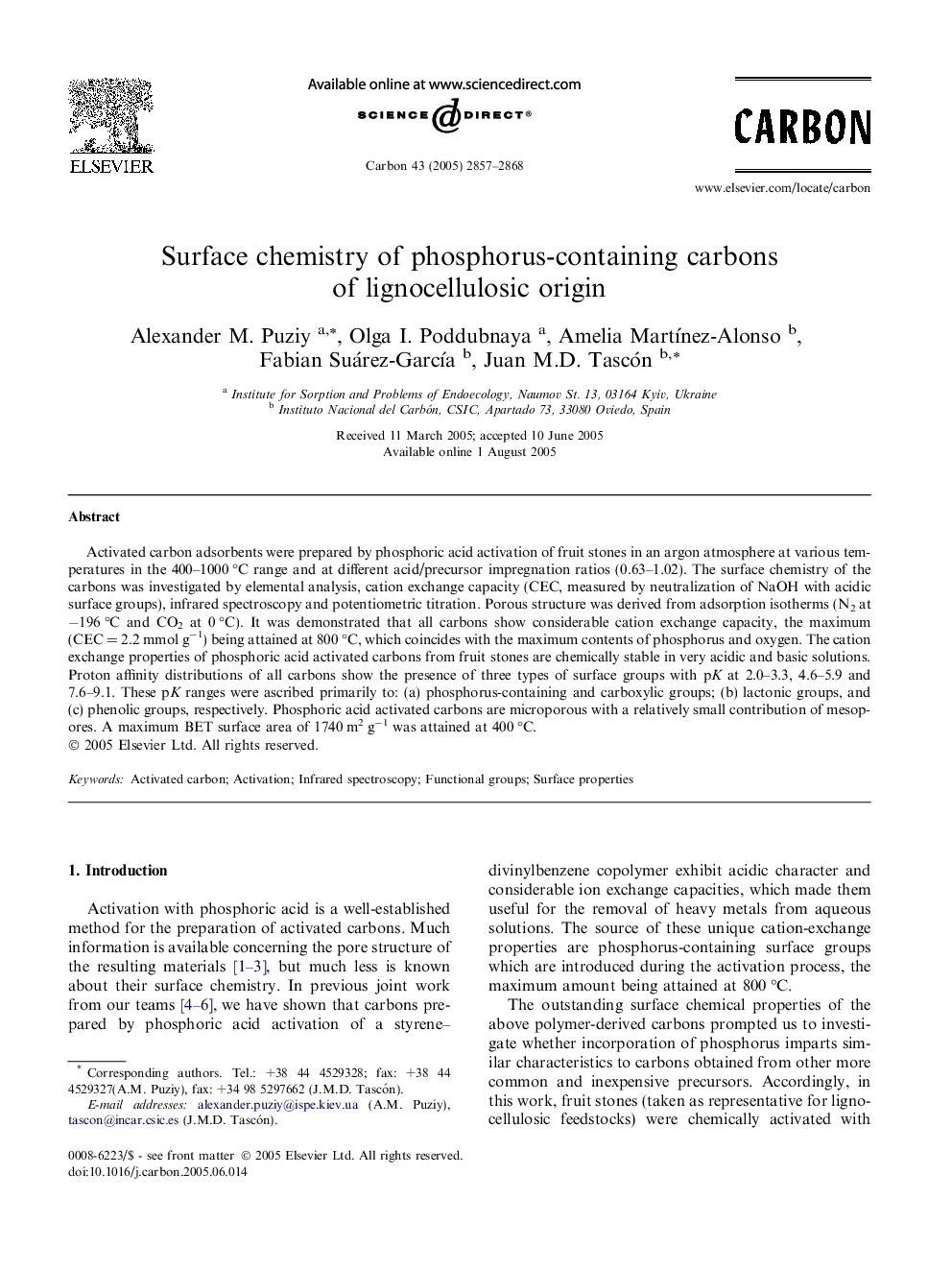| Article ID | Journal | Published Year | Pages | File Type |
|---|---|---|---|---|
| 1418912 | Carbon | 2005 | 12 Pages |
Activated carbon adsorbents were prepared by phosphoric acid activation of fruit stones in an argon atmosphere at various temperatures in the 400–1000 °C range and at different acid/precursor impregnation ratios (0.63–1.02). The surface chemistry of the carbons was investigated by elemental analysis, cation exchange capacity (CEC, measured by neutralization of NaOH with acidic surface groups), infrared spectroscopy and potentiometric titration. Porous structure was derived from adsorption isotherms (N2 at −196 °C and CO2 at 0 °C). It was demonstrated that all carbons show considerable cation exchange capacity, the maximum (CEC = 2.2 mmol g−1) being attained at 800 °C, which coincides with the maximum contents of phosphorus and oxygen. The cation exchange properties of phosphoric acid activated carbons from fruit stones are chemically stable in very acidic and basic solutions. Proton affinity distributions of all carbons show the presence of three types of surface groups with pK at 2.0–3.3, 4.6–5.9 and 7.6–9.1. These pK ranges were ascribed primarily to: (a) phosphorus-containing and carboxylic groups; (b) lactonic groups, and (c) phenolic groups, respectively. Phosphoric acid activated carbons are microporous with a relatively small contribution of mesopores. A maximum BET surface area of 1740 m2 g−1 was attained at 400 °C.
